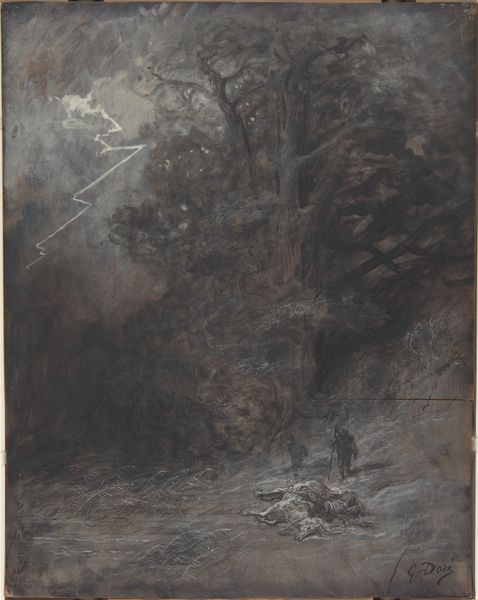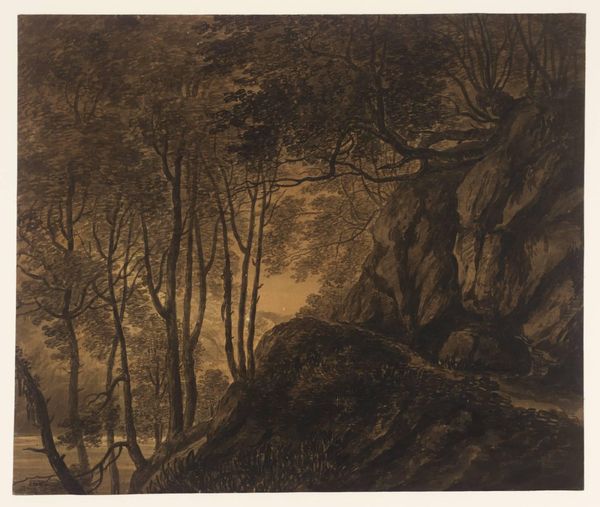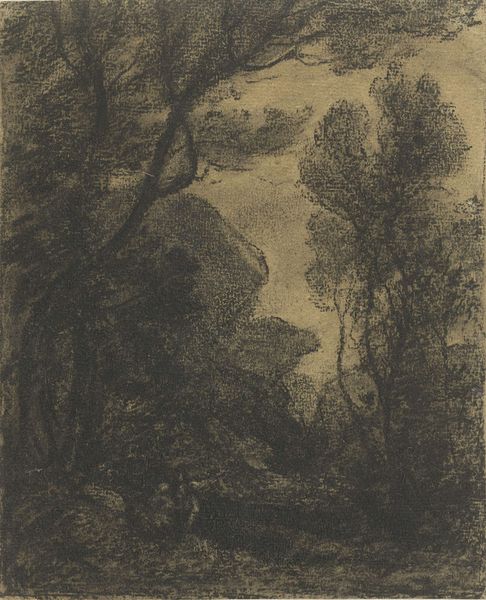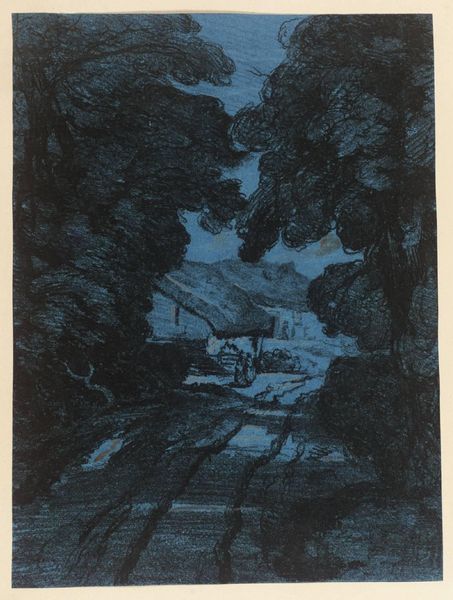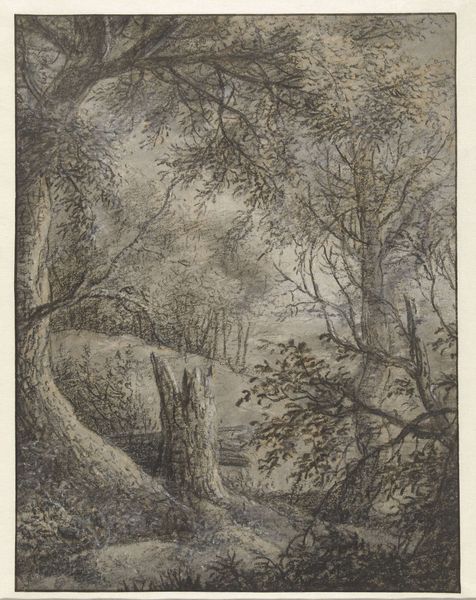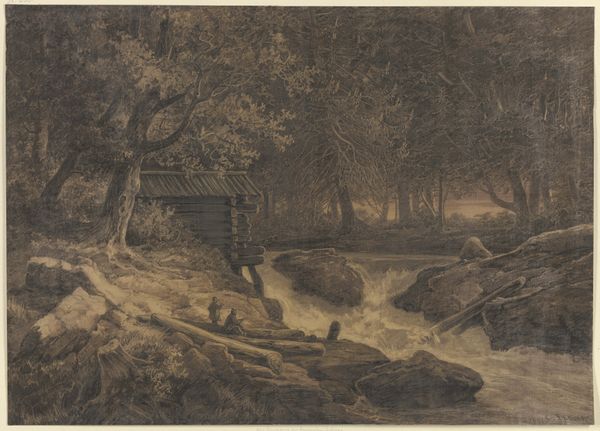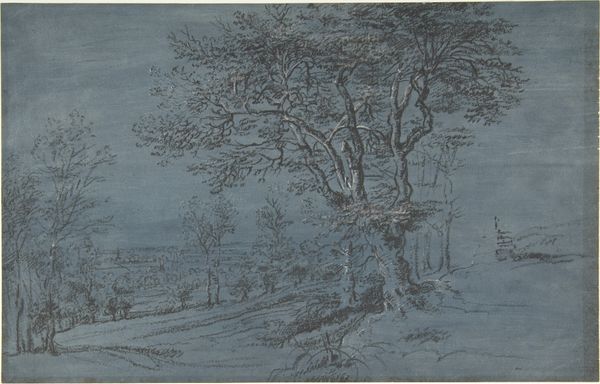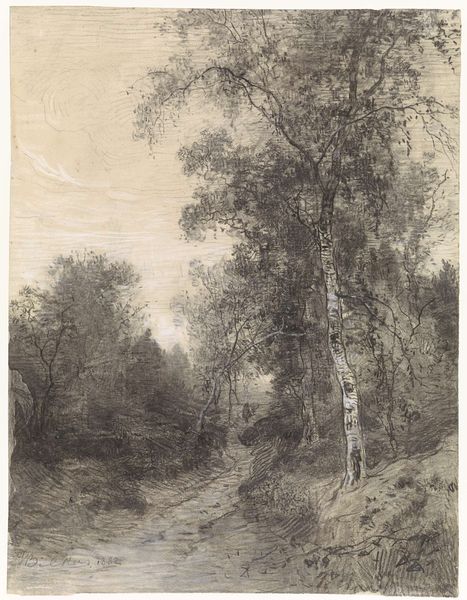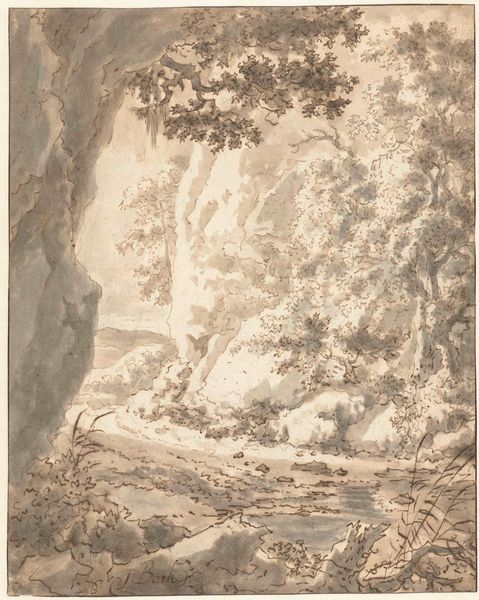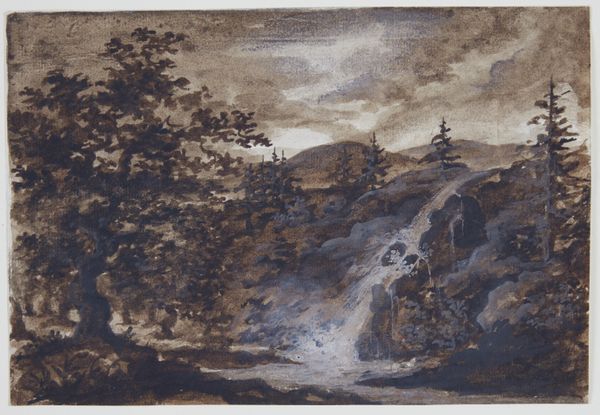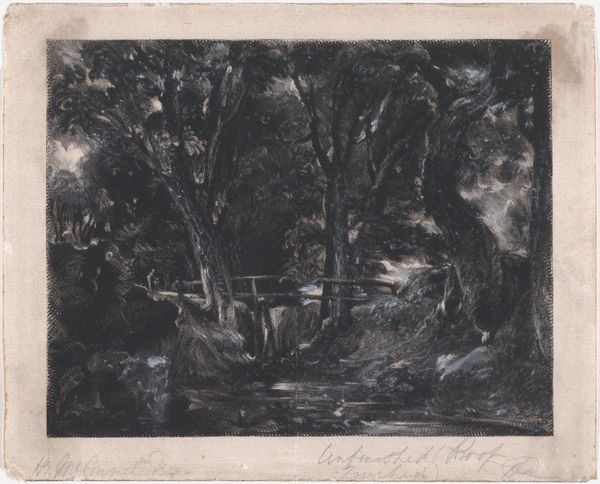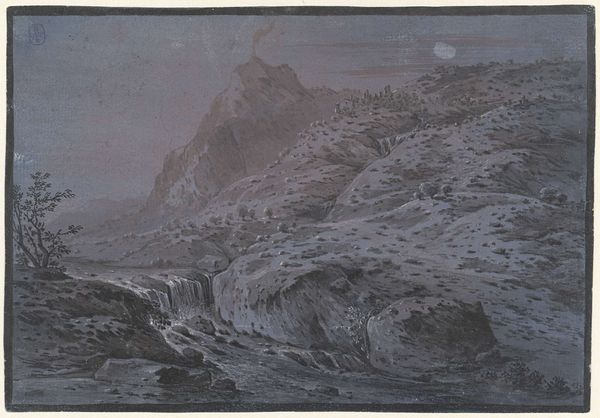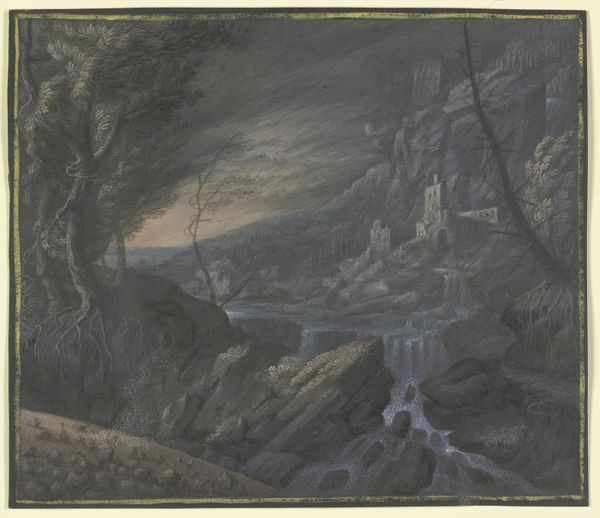
drawing, paper, pen
#
drawing
#
baroque
#
landscape
#
paper
#
geometric
#
pen
#
watercolor
Dimensions: height 144 mm, width 182 mm
Copyright: Rijks Museum: Open Domain
Editor: So this is "Evening Landscape with Overgrown Ruin" made with pen, watercolor, and paper by Monogrammist IAR or IAP in 1656. It definitely feels…melancholy, almost like a stage set. What strikes you about it? Curator: It's fascinating to see ruins depicted in such a way, less as romantic relics and more as products of material decay and abandonment. Consider the labor that went into constructing this ruin in the first place. Then the materials used, the stone gradually succumbing to the elements… It's not just a scene; it's a commentary on the cyclical nature of production and destruction. What do you make of the overgrown aspect of the scene? Editor: I guess that connects to the 'Evening' part of the title - like, nature is reclaiming what humans made. Was paper expensive back then? Did that affect who could make art? Curator: Absolutely. The availability and cost of materials always shapes artistic output. Paper, pens, watercolors - these were commodities with their own economic and social history. By considering that, we can move past just looking at aesthetics, and think about how art production intersected with trade, class, and power. Who had access to those materials and to whom could they then convey these melancholic messages? Editor: That's interesting. I hadn't thought about the economics of art materials beyond just who could afford the finished piece. Curator: Exactly! Looking at the materiality gives us a grounded perspective. Instead of lofty artistic intentions, we see the tangible connections to the artist's world: the paper, the pigments, the economic systems that made the art possible, the patrons to whom it was marketable. Editor: So it’s like reading the artwork as a historical document, focusing on what it tells us about its making. Curator: Precisely. We examine the social life of art through its materials and the means of its production. That adds a different dimension to art appreciation!
Comments
No comments
Be the first to comment and join the conversation on the ultimate creative platform.
